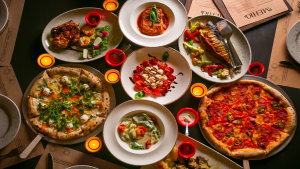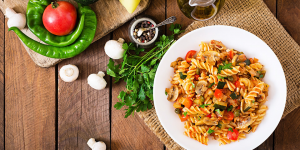
What to cook for the post?
Lenten dishes: what are they?
Is it necessary to stock up on recipes for delicious lenten dishes, if fasting is the time to limit oneself in bodily pleasures in order to grow spiritually?
There is a time of the church year when the Orthodox are allowed to cook and eat only fast food. Of course, fasting imposes certain restrictions. But the Church does not forbid trying to diversify the Lenten menu with simple recipes for delicious Lenten dishes. Many fasting people (for example, children) may not be able to fast if they do not make a delicious lenten menu. It is important not to forget that the main thing in fasting is prayer, dialogue with God and an attempt to get closer to Him.

Lenten dishes are usually very light and easy to prepare
which helps in fasting to think less about the body and more about the spiritual.
Many secular establishments, cafes and restaurants start a special menu of lenten dishes during the fasting period, but vegetable cutlets, dishes from a variety of vegetables and lean borscht can be cooked at home. In addition, the food of the lean table, as a rule, is among the dietary dishes. And for many, these recipes can be useful outside of fasting. After all, they are made up of available ingredients and will be an excellent side dish and diversify your usual menu.
Do not forget that God does not require us to harm ourselves, and if for health reasons you cannot observe a strict fast, then before switching to fasting dishes, it is better to consult with your doctor and confessor. In such cases, relaxation of the fast is allowed.
The Pravmir portal has prepared for you an extensive list of recipes and information on cooking during Lent.
Lenten dishes
In our rational and scientific age, with its abundance of information, shocking upheavals of catastrophes and misfortunes, there is a lack of a good miracle that brings quiet joy, peace of mind. And we forget that this miracle is always near us, even within us, it is given by God through our repentance and the desire to change our lives internally, to harmonize it with God’s will for us. This miracle is the transformation of a person. Is it not a miracle when a person, accustomed to living according to the flesh, aspires to the spiritual, who has never known prayers, finds sweetness in church hymns, comprehends the joy of doing good, the consolation of repentance for sins. Great Lent pushes us to all this with all its structure: long biblical readings, penitential prayers and hymns, the charter on food. During the Holy Week of Great Lent, the strictest fast is observed.
Great post. How do we fast?
We fast with a fast that is pleasing to the Lord. true fasting is the alienation of evil, abstinence of the tongue, renunciation of wrath, excommunication of lusts, utterances, lies and perjury. This impoverishment is a true and auspicious fast. (from the Liturgy of Great Lent)
As the saying goes: “A good start is half done”. Apparently, therefore, many Christians fast more strictly in the first week of fasting.
Great Lent implies the exclusion from the diet of meat, dairy, fish food and eggs, but the measure of your fast must be agreed with the confessor, not forgetting to remind you of your state of health.

Lenten cereals
If you regularly cooked porridge for your family, then you can also cook it in fasting, only not with milk, but with water, and not season with oil, but serve sauce, or sweet to it: based on jam or jelly, berries, steamed and chopped dried fruits, nuts, honey, cocoa, vegetable corn cream, or unsweetened: vegetable, mushroom; in both cases, variations using spices are very interesting.
Do not forget about the diversity of the main component – cereals: rice, buckwheat, pearl barley, oatmeal, semolina … whole, crushed, flakes. Play on the consistency of porridge: from a slurry close to mashed soup to crumbly “grain to grain”. Additional components can not only be served in the form of a sauce, but also added during the preparation of porridge.
